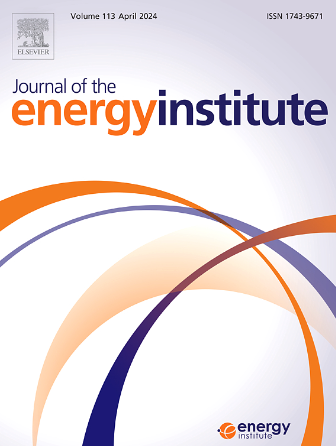层流预混和非预混火焰中二维烟尘和温度测量的红外成像
IF 5.6
2区 工程技术
Q2 ENERGY & FUELS
引用次数: 0
摘要
光谱烟尘发射(SSE)是一种有效的火焰成像技术,用于提取烟尘和温度场。目前,SSE的应用主要集中在可见光到近红外范围,但其精度与E(m)λ烟灰吸收函数的复杂波长依赖性密切相关。我们之前在预混扁平火焰中的研究已经通过使用红外光谱范围证明了高保真SSE测量。在这里,我们扩展了之前的工作,首次研究了基于sse的红外成像在预混扁平火焰和非预混共流火焰中二维温度测量的可靠性。通过与其他已建立的技术和数值预测的交叉比较,对不同波长范围内SSE测量的性能进行了评估。研究发现,在1100 ~ 1400 nm的红外波段进行SSE测量,在预混和非预混火焰中都能提供更可靠的温度结果,比660 ~ 905 nm的可见光-SSE测量精度更高。其原因可能与E(m)λ对红外(可见)区域光谱变化的弱(强)敏感性有关,这是由660-1400 nm不同波长的平行二维消光烟尘测量推断出来的。本研究证明了红外成像对基于灭绝的精确煤烟和基于sse的温度测量的好处。该结果有望指导精确和经济的二维sse -高温法的发展。本文章由计算机程序翻译,如有差异,请以英文原文为准。
Infrared imaging for two-dimensional soot and temperature measurements in laminar premixed and non-premixed flames
Spectral soot emission (SSE) is an effective flame imaging technique for retrieving soot and temperature field. Currently, the application of SSE is focused on the visible to near-infrared range, but the accuracy is strongly related to the complex wavelength-dependence of soot absorption function of E(m)λ. Our previous study in a premixed flat flame has demonstrated high-fidelity SSE measurements by using an infrared spectral range. Here, we extend previous work to investigate, for the first time, the reliability of SSE-based infrared imaging for two-dimensional temperature measurements in both premixed flat flames and non-premixed coflow flames. The performance of SSE measurements within different wavelength ranges have been evaluated through a cross-comparison with other established techniques and with numerical predictions. It is found that SSE measurements using wavelength in the infrared range of 1100–1400 nm could provide more reliable temperature results in both premixed and non-premixed flames, showing improved accuracy than the visible-SSE measurements in the spectral range of 660–905 nm. The reason could be correlated to the weak (strong) sensitivity of E(m)λ to spectral variation in the infrared (visible) region, as inferred from the parallel two-dimensional extinction-based soot measurements at different wavelengths of 660–1400 nm. The present study demonstrates the benefits of infrared imaging for accurate extinction-based soot and SSE-based temperature measurements. The results are expected to guide the development of accurate and cost-effective two-dimensional SSE-pyrometry.
求助全文
通过发布文献求助,成功后即可免费获取论文全文。
去求助
来源期刊

Journal of The Energy Institute
工程技术-能源与燃料
CiteScore
10.60
自引率
5.30%
发文量
166
审稿时长
16 days
期刊介绍:
The Journal of the Energy Institute provides peer reviewed coverage of original high quality research on energy, engineering and technology.The coverage is broad and the main areas of interest include:
Combustion engineering and associated technologies; process heating; power generation; engines and propulsion; emissions and environmental pollution control; clean coal technologies; carbon abatement technologies
Emissions and environmental pollution control; safety and hazards;
Clean coal technologies; carbon abatement technologies, including carbon capture and storage, CCS;
Petroleum engineering and fuel quality, including storage and transport
Alternative energy sources; biomass utilisation and biomass conversion technologies; energy from waste, incineration and recycling
Energy conversion, energy recovery and energy efficiency; space heating, fuel cells, heat pumps and cooling systems
Energy storage
The journal''s coverage reflects changes in energy technology that result from the transition to more efficient energy production and end use together with reduced carbon emission.
 求助内容:
求助内容: 应助结果提醒方式:
应助结果提醒方式:


